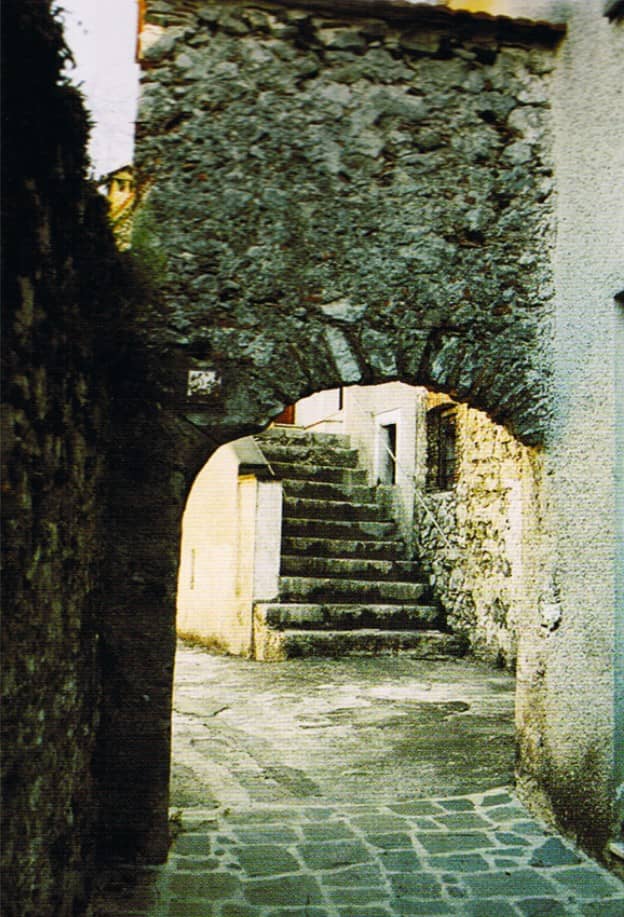Along the village’s medieval streets and alleyways, you can find many palaces with airy courtyards, around which the entire building gravitates.
Along the village’s medieval streets and alleyways, you can find many palaces with airy courtyards, around which the entire building gravitates.
Inside, they have limestone stairways leading to the main or representative rooms of the house and, not infrequently, also wells for recovering rainwater and centuries-old vines planted, generally, to the south of the houses to shade them during the summer, as is customary in the Mediterranean area.
However, this courtyard deserves special attention in view of the important historical events connected with it. It stands in the highest part of the village (584 metres above sea level), where the Castrum, a sort of castle/fortress, later coinciding with the Civita, was probably located.

External courtyard.

Identification of the Norman settlement in the hypothetical plan of the eighteenth century.
Accessibility Tools